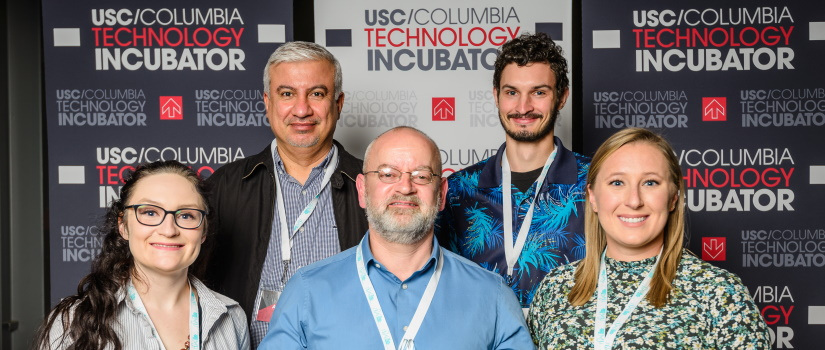March 17, 2021 | Erin Bluvas, bluvase@sc.edu
It’s been approximately one year since environmental health sciences professor Jamie Lead received a $50,000 Innovation Corps (I-Corps) grant from the National Science Foundation. The Center for Environmental Nanoscience and Risk (CENR) director used the funding to commercialize CENR techniques through his start-up company, GeoMat, so that government agencies, private companies and others in the environmental clean-up industry can access and implement these inventions.
As evidenced by GeoMat’s selection to receive the Innovative Technology Award from the USC/Columbia Technology Incubator, the start-up is quickly growing and accomplishing its goals. To take their work even further, GeoMat was awarded $256K from NSF’s Small Business Innovation Research (SBIR) program. They were subsequently approved as a South Carolina Research Authority Member Company, receiving an additional $50k through SCRA’s SBIR Phase I Matching Grant, a program to increase a company’s likelihood of obtaining a Phase II award.
“GeoMat was selected for the Innovative Technology Award for having developed and patented multiple promising nanotechnologies that have the potential to rapidly scale to meet the demands of some very large domestic and international markets," says Caroline Crowder, program director for the USC Columbia Technology Incubator. "Their accomplishments so far on their entrepreneurial journey are quite impressive and their positioning to achieve further success as the team continues to develop is highly promising.”
Lead and his GeoMat team will use their latest NSF funding to support the next phase in bringing their patented oil remediation technique to market. Nanoparticles are used to remove oil from contaminated water or soil. It is a platform technology which can be deployed in a variety of specific situations and at scale to treat very large discharges and spills.
“Dr. Lead and his team at Geomat have worked extensively with commercial remediation partners, the National Oceanic and Atmospheric Administration and researchers at UofSC and other universities to demonstrate the safety and effectiveness of this new nanotechnology in reducing oil pollution and ecotoxicological hazards to marine life,” says Geoff Scott, clinical professor and chair of the Department of Environmental Health Sciences. “These results clearly indicate that this new technology can be applied to better protect a variety of ecosystems throughout the globe, and we are so proud of the commercial development of this technology at Geomat, in collaboration with CENR, as this represents a big step forward with environmental nanotechnology application.”
Over the past several years, they have perfected this nanotechnology in a variety of contexts and conditions. In this next phase, GeoMat will work with local spill response teams to apply their oil remediation technique in Alaska as a test case before further expansion.
“There is an urgent need to come up with new remediation approaches in remote yet ecologically significant areas, such as Alaska,” Lead says. “Environmental clean-up in remote areas creates challenges related to the logistical challenged and can cost 100 times more than in non-remote places. This project will provide economic and training benefits to under-resourced groups in Alaska, along with other economic and environmental benefits.”
Despite being the sixth largest oil-producing state in the U.S., Alaska has limited infrastructure for dealing with oil spills. Though most people think of catastrophic oil spills, such as 2010 BP Deepwater Horizon oil spill with its estimated $14 billion in clean-up costs, most spills are smaller and more routine. For example, over 1,400 small-scale events and 10 larger spills are responsible for the 150,000 gallons of crude, diesel and other oils that are released into the Alaskan territory on an annual basis.
GeoMat’s remediation technique removes more than 99 percent of oil from water when deployed immediately and can achieve up to 95 percent reduction in toxicity even with delayed application, as is often the case for remote areas. Unlike other methods, it employs non-toxic materials – leaving the environment closer to its pre-polluted state – and exposure can be controlled. The risk to the environment and human health is therefore minimized. It also reduces clean-up costs by 80 to 90 percent in remote settings. To further address the challenges of remote locations, the team will develop a system for treating oily water in remote areas.
Related:
CENR awarded National Science Foundation grant to bring patented method for oil cleanup to market
CENR perfects revolutionary technique for cleaning up oil contamination
Lead (ENHS) and CENR researchers develop new way to remedy oil spills: faster, cheaper, cleaner
